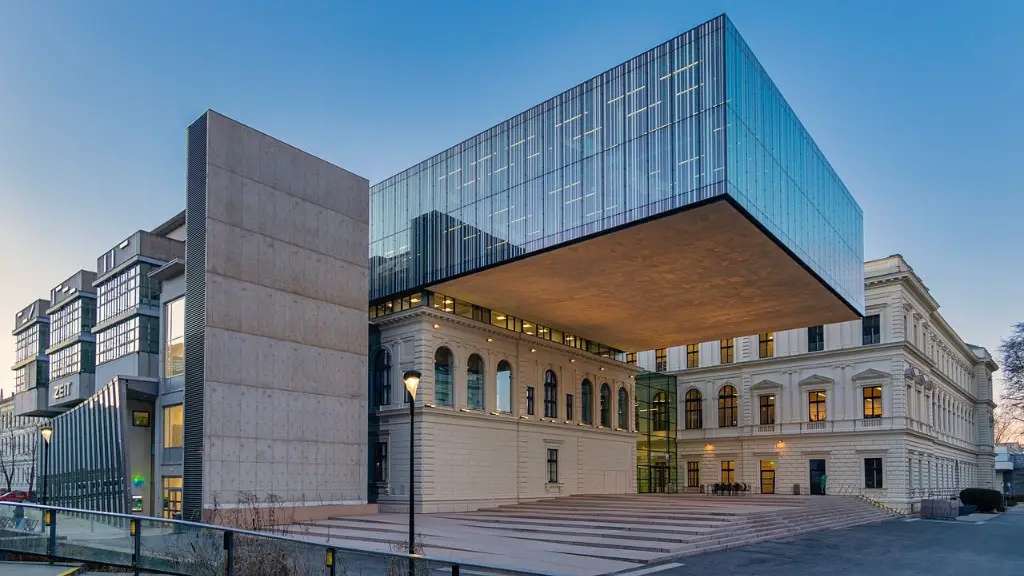If you’re curious as to why you, personally, are interested in architecture, the answer may lie in its versatility as a profession. Architecture can offer you a seemingly endless array of opportunities, from designing functional buildings such as hospitals and schools to creating stunning public art installations. It is a career that can allow you to express your creativity while also being able to have a meaningful impact on the lives of others.
Additionally, the field of architecture is constantly evolving, so there is always something new to learn and explore. The application of new technologies and advancements in materials science, for example, has allowed for the development of increasingly innovative and sustainable architecture. This is an area of growth for many architecture firms and also a point of pride for many architectural designers.
Moreover, those who pursue a career in architecture will have the opportunity to travel and collaborate with clients and architects from around the world. The traditional design process takes the designer through sketching, modeling, and constructing a physical prototype before finalizing their design. Working in this globalized environment can provide an adventurer with a myriad of new experiences and insight, resulting in an incredibly rewarding profession.
Architecture also provides a great opportunity to pursue something that you are passionate about. Whether you are an aspiring artist, a dreamer, or just someone who wants to make an impact on the world, the versatility of architecture is an ideal platform to make your personal mark. Architecture is a field that rewards hard work, creativity, and problem-solving skills, so it can be a great way to stretch and see how far your potential can take you.
In addition, studying architecture can also provide you with a unique job outlook. While its core concepts are widely applicable, architecture also requires knowledge and experience in specific fields such as structural engineering and landscape design. As such, those with a strong architectural education will be better equipped to meet the needs of employers in the construction industry.
For those considering a career in architecture there are numerous resources available to help you better understand this complex profession. Online resources such as blogs, websites, and design software can provide potential students with an up-close look at the field of architecture and allow them to explore its many facets.
Finally, the impression that architecture can leave on its audience can be tremendous. From past and present works, stunning structures can both evoke feelings of awe and create a sense of belonging in the people who interact with it. Each design has its own story to tell and provides an enriching experience to anyone who takes the time to appreciate it.
The Economics of Architecture
For those looking to make a living as an architect, understanding the economics of the field is key. An understanding of the economic drivers behind architectural fees, general contracts and money management is essential in order to stay competitive and remain in business. Architects must also understand industry trends and understand the project solicitations and contract awards. Financial planning and budgeting are also essential skills to ensure an architecture build is completed on time and on budget.
At the basic level, demand for architecture services is essentially dictated by the housing and business sectors. Demand generally increases with population growth since this usually means an increase in demand for both housing and office space. Construction costs and complexity, as well as the overall demand for architectural services, will also depend on the size and type of project. Many times, intricate and specialized projects require additional input from other professionals such as engineers and surveyors, leading to a greater demand for architectural services.
Over the years, the cost of supplying architectural services has increased due to rising overhead costs and wages. It is important for architects to continually monitor the cost of their services, as the pricing and cost structure of architectural services remain an important factor in a successful business. Establishing an effective fee structure, in which clients pay a fee for design services that covers the cost of executing work and understanding how to develop a rapport with clients can help architects remain competitive and profitable.
The Benefits of Sustainable Architecture
As environmental issues loom larger, the importance of sustainable architecture increases. Sustainable architecture is a design approach that seeks to reduce the environmentally detrimental impact of building construction and rehabilitation. Achieving sustainable architecture involves incorporating a number of factors, such as site selection, construction materials, energy efficiency, interior lighting and water conservation, into a complete and comprehensive design.
One of the most important benefits of sustainable architecture is that sustainable buildings are generally more energy efficient, making them more attractive from an economic standpoint. The use of sustainable materials, such as recycled materials and high-efficiency glazing and insulation, can significantly reduce operational costs associated with heating and cooling a building. Additionally, materials that are sourced locally can reduce the environmental footprint of a project and save money on transportation costs.
Additionally, sustainable architecture also has the potential to contribute to local economies in the form of job creation and small business formation. Buildings constructed with greater efficiency can use less energy and reduce the need for external energy sources, thus creating green jobs and improving the local economy. Additionally, the use of non-toxic, locally-sourced materials can reduce the cost of construction and benefit local manufacturers.
Finally, sustainable architecture also has the potential to create a more aesthetically pleasing environment. Sustainable building materials and practices can result in buildings that are more open and inviting for residents and passersby. Sustainable architecture also allows for more effective use of natural light and improved air quality, which can further increase comfort and reduce stress levels.
Applications of Advanced Technology in Architecture
Technology plays an important role in the architecture industry, from the early stages of design to the moment of a building’s completion. Advanced technologies can make a substantial difference in the quality of the design, efficiency of the construction process, and bottom line of a project. These technologies can help to reduce time, cost, and waste, while also improving design quality.
In the design phase, the use of advanced computer-aided design and drafting (CADD) programs can help architects create comprehensive and accurate drawings. Additionally, 3D modeling and augmented reality can also help to give a more comprehensive sense of the project before even breaking ground. Once construction begins, the use of construction management software can help track progress, ensure project budgets are met, and keep projects running smoothly.
In addition to the traditional uses for technology in architecture, technological advances have also allowed for new and exciting breakthroughs in design. For example, the use of autonomous robots on larger construction sites can help monitor progress, enforce safety procedures, and provide real-time insights into the project status. The use of artificial intelligence and machine learning can also help architects make more informed decisions through data analysis and simulations.
Finally, as the architecture industry continues to advance, technology will play an increasingly important role in not only the construction but also the maintenance of buildings and infrastructure. For instance, the use of automated systems can help make buildings more efficient, while digital mapping and scanning can be used to detect issues before they affect occupants. As technology continues to evolve, so too will the opportunities and applications of technology in the architecture industry.
The History and Impact of Iconic Architecture
Architecture has played an integral part in the social and cultural development of civilizations since the moment of its inception. On a basic level, architecture has provided shelter and served as a representation of the society it is a part of. However, certain buildings come to define the identity of the society built around them, making them unique symbols of the past.
Iconic buildings such as the Great Pyramid of Giza in Egypt, the Eiffel Tower in Paris, and the Empire State Building in New York are all examples of architecture that has transcended its purpose and made an indelible impact on the world. These unique structures stand as evidence of the innovation, craftsmanship, and skill of their creators and were robust enough to survive until the modern day.
Aside from being a physical symbol of a bygone era, these ancient architectural feats are also a testament to the power of human creativity. The complex designs and engineering feats achieved by these iconic buildings still inspire awe and admiration in contemporary audiences, reminding us of the potential of human accomplishment.
Finally, these works of architecture have one another dimension: their power to redefine landscapes and transform public perception. The Eiffel Tower, for example, has become a symbol of the romanticism and vibrance of Paris, while the Great Pyramid of Giza has been a source of wonder and speculation for thousands of years. These architectural marvels have shaped the identities of the cities and civilizations they were built for, and remain a powerful influence on how we view the world today.





